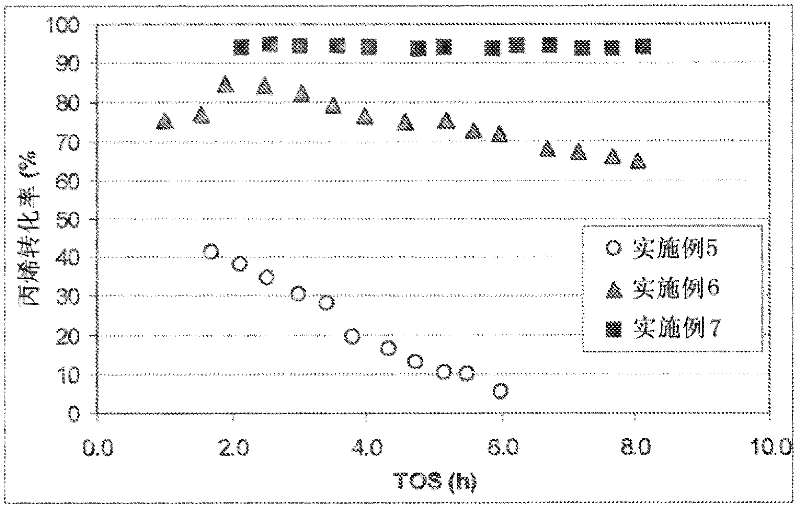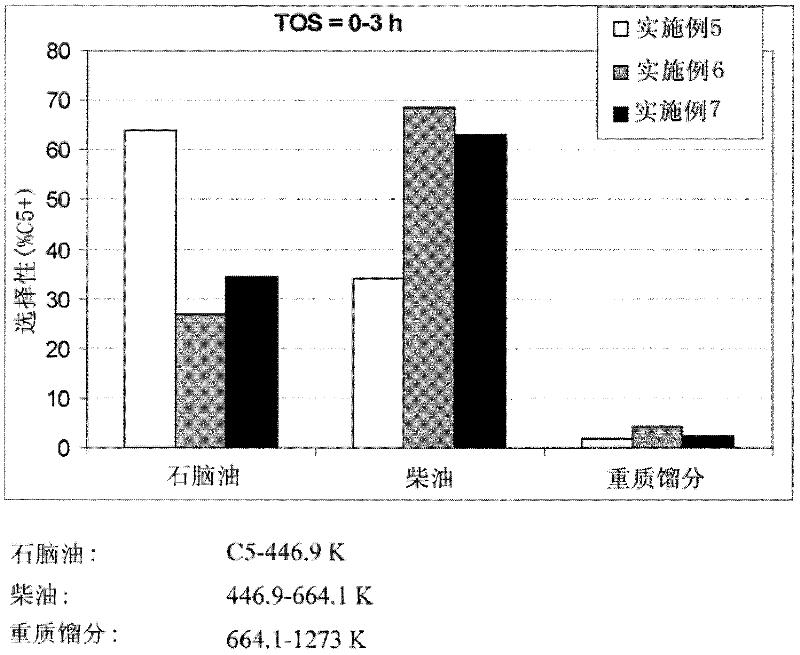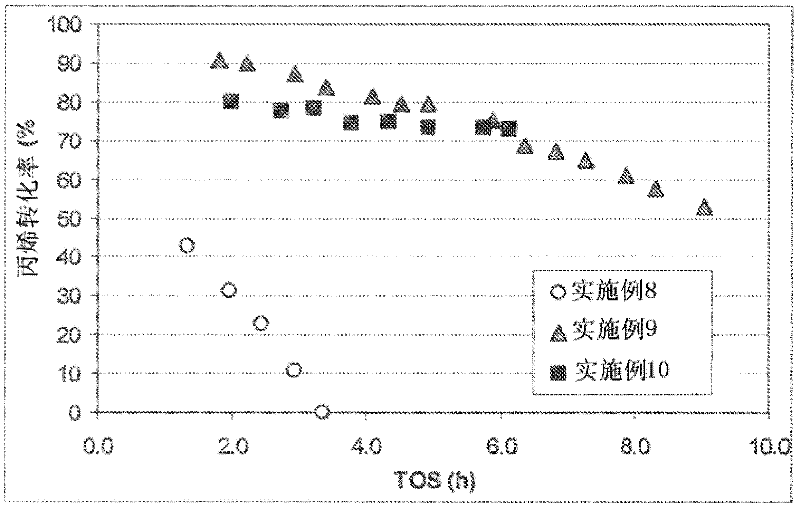Alkene oligomerization process
A technology of olefins and hydrocarbon fractions, which is applied in the field of olefin oligomerization, and can solve problems such as limiting the degree of branching
- Summary
- Abstract
- Description
- Claims
- Application Information
AI Technical Summary
Problems solved by technology
Method used
Image
Examples
Embodiment 1
[0047] 3 g of hydrogen form θ-1 zeolite (H-θ-1, Si / Al=50) was suspended in 100 ml of 0.2 M aqueous sodium hydroxide solution and vigorously stirred at 80° C. for 30 minutes. The reaction was then quenched by cooling in an ice bath. The remaining solid was isolated by filtration, washed with distilled water and dried overnight at 100°C. Then, at 83 °C with 0.1 M NH 4 NO 3 The solution was exchanged three times continuously for 2 hours with a liquid-solid weight ratio of 20 to convert the alkali-treated θ-1 into its acid form. Finally the samples were fired at 450°C for 5 hours. This modified zeolite catalyst exhibits distinct mesoporous (V 介孔 =0.107cm 3 g -1 ).
Embodiment 2
[0049] 3 g of theta-1 zeolite in the hydrogen form (H-θ-1, Si / Al=50) was suspended in 100 ml of 0.2 M aqueous sodium hydroxide solution and vigorously stirred at 85° C. for 30 minutes. The reaction was then quenched by cooling in an ice bath. The remaining solid was isolated by filtration, washed with distilled water and dried overnight at 100°C. Next, the base-treated θ-1 was suspended in a 2.0 M aqueous solution of oxalic acid (liquid / solid ratio 10 w / w) and stirred at 70° C. for 2 hours. The solid was isolated by filtration, washed with distilled water and dried overnight at 100°C. Finally the samples were fired at 375°C for 3 hours. The modified zeolite catalyst exhibits mesoporous (V 介孔 =0.117cm 3 g -1 ).
Embodiment 3
[0051] 3 g of zeolite in hydrogen form θ-1 (H-θ-1, Si / Al=25) was suspended in 100 ml of 0.2 M aqueous sodium hydroxide solution and vigorously stirred at 85° C. for 30 minutes. The reaction was then quenched by cooling in an ice bath. The remaining solid was isolated by filtration, washed with distilled water and dried overnight at 100°C. Next, at 80 °C with 0.1 M NH 4 NO 3 The solution was exchanged three times continuously for 2 hours with a liquid-solid weight ratio of 20 to convert the alkali-treated θ-1 into its acid form. Finally the samples were fired at 450°C for 5 hours. The modified zeolite catalyst exhibits mesoporous (V 介孔 =0.067cm 3 g -1 ).
PUM
 Login to View More
Login to View More Abstract
Description
Claims
Application Information
 Login to View More
Login to View More - R&D
- Intellectual Property
- Life Sciences
- Materials
- Tech Scout
- Unparalleled Data Quality
- Higher Quality Content
- 60% Fewer Hallucinations
Browse by: Latest US Patents, China's latest patents, Technical Efficacy Thesaurus, Application Domain, Technology Topic, Popular Technical Reports.
© 2025 PatSnap. All rights reserved.Legal|Privacy policy|Modern Slavery Act Transparency Statement|Sitemap|About US| Contact US: help@patsnap.com



